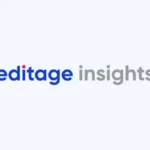Q: What is the Level 1 plagiarism percentage of similarity?
There are five levels of plagiarism as defined by the Publication Services and Products Board (PSPB) of the Institute of Electrical and Electronics Engineers (IEEE). The IEEE is an industry body in the fields of computers and electronics and has been responsible for defining standards for these industries for close to five decades now.
The levels are in decreasing order of severity, that is, 1 is the most extreme and 5 is the least extreme. You may find out more about what comes under each level in Section 8.2.4.D of the complete PSPB Operations manual here or in the extract of the section here.
But in short, Level 1 is used to define any of the following types or extents of plagiarism:
- A complete copy of another author’s document with only the name changed
- A copy of more than 50% of another author’s paper
- A copy from multiple papers (written by other authors) by the same author amounting to more than 50%
The actions against this type of plagiarism are quite stringent, and again, you can read about them in any of the documents linked earlier.
You haven’t more provided more information, such as whether the plagiarism was found after the paper/s has been published or whether it was detected on submission.
Most journals use plagiarism detection software as an initial check on a submitted manuscript. However, they don’t rely on the software alone, but also use their discretion to decide. They may also guide authors on how to rewrite so as to avoid plagiarism.
If the paper is at the submission stage, things can be worked out. You may refer to the resources provided at the end of this response to figure out how to do so. Additionally, you or the responsible author/s may use a plagiarism check service such as the one we provide, to help identify the plagiarism, which you/they then need to revise.
If however, the paper has already been published, it will most probably be retracted, which is a severe outcome and can prove quite a bit of a dent in one’s academic credentials.
Anyway, all the best to you/the author/s for the way forward.
Important resources:


